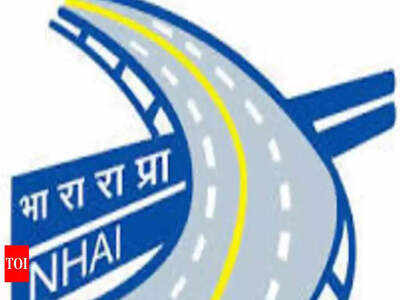
MANGALURU: The National Highways Authority of India (NHAI) has tied up with four engineering colleges of Coastal Karnataka to collaborate and adopt nearby stretches of NH, as part of Institutional Social Responsibility (ISR). The objective is to leverage the intellectual prudence of students and faculty towards the improvement of the road infrastructure ecosystem of the country.
Shishu Mohan, project director, NHAI, Mangaluru told TOI that NHAI had approached four institutes including Manipal Institute of Technology (MIT), MAHE, National Institute of Technology, Karnataka (NITK) Surathkal, Mangalore Institute of Technology and Engineering (MITE) Moodbidri and Karwar Engineering College and has signed an MOU with the directors of these institutes. They will give suggestions for the development of the highways. The highway stretches have been divided accordingly among the four institutions. We hope to depute one student each for every five kilometers. This will provide an opportunity for the students to get field experience and will act as a helping hand for NHAI that in turn will enjoy support from premier institutes, he said.
The institutes along with its faculty and students have a better appreciation of local requirements, topography, and resource potential, and these vital inputs can be utilized by NHAI during different stages of pre-construction, construction, and operation of NH stretches. This decentralized approach, besides building a sense of participation in decision making, also provides an opportunity to the students for hands-on-learning, options for an internship, and future areas of research. The adoption of stretch by institutes opens avenues for access to important data, which can be used to improve the quality and safety aspects of NH and enhance the local capacity of the institute in terms of advanced lab and simulation systems.
Adoption of NH stretch by an Institute would facilitate stakeholder engagement and help to mitigate the routine local problems such as traffic movement, congestion, and immediate identification of accident-prone sites. The highway users become more empowered in resolving local problems through the institute and the authority. Such instances would help NHAI in understanding the local needs both in the present and future projects, improve the maintenance and riding comfort, and develop wayside amenities for enhanced user experience. The overall outcome shall be a commuter-friendly and enjoyable ride on the NH stretch, stated NHAI.
Shishu Mohan, project director, NHAI, Mangaluru told TOI that NHAI had approached four institutes including Manipal Institute of Technology (MIT), MAHE, National Institute of Technology, Karnataka (NITK) Surathkal, Mangalore Institute of Technology and Engineering (MITE) Moodbidri and Karwar Engineering College and has signed an MOU with the directors of these institutes. They will give suggestions for the development of the highways. The highway stretches have been divided accordingly among the four institutions. We hope to depute one student each for every five kilometers. This will provide an opportunity for the students to get field experience and will act as a helping hand for NHAI that in turn will enjoy support from premier institutes, he said.
The institutes along with its faculty and students have a better appreciation of local requirements, topography, and resource potential, and these vital inputs can be utilized by NHAI during different stages of pre-construction, construction, and operation of NH stretches. This decentralized approach, besides building a sense of participation in decision making, also provides an opportunity to the students for hands-on-learning, options for an internship, and future areas of research. The adoption of stretch by institutes opens avenues for access to important data, which can be used to improve the quality and safety aspects of NH and enhance the local capacity of the institute in terms of advanced lab and simulation systems.
Adoption of NH stretch by an Institute would facilitate stakeholder engagement and help to mitigate the routine local problems such as traffic movement, congestion, and immediate identification of accident-prone sites. The highway users become more empowered in resolving local problems through the institute and the authority. Such instances would help NHAI in understanding the local needs both in the present and future projects, improve the maintenance and riding comfort, and develop wayside amenities for enhanced user experience. The overall outcome shall be a commuter-friendly and enjoyable ride on the NH stretch, stated NHAI.

Coronavirus outbreak
Trending Topics
LATEST VIDEOS
City
 Maharashtra: 3 cops dismissed from service in Palghar lynching case
Maharashtra: 3 cops dismissed from service in Palghar lynching case  Fresh India-China face-off in Ladakh: Srinagar-Leh highway closed for civilians
Fresh India-China face-off in Ladakh: Srinagar-Leh highway closed for civilians  SSR death probe: Dean of Cooper Hospital quizzed with regards to Rhea Chakraborty’s entry in mortuary
SSR death probe: Dean of Cooper Hospital quizzed with regards to Rhea Chakraborty’s entry in mortuary  Decline in medical condition of former President Pranab Mukherjee: Army hospital
Decline in medical condition of former President Pranab Mukherjee: Army hospital
More from TOI
Navbharat Times
Featured Today in Travel
Quick Links
Kerala Coronavirus Helpline NumberHaryana Coronavirus Helpline NumberUP Coronavirus Helpline NumberBareilly NewsBhopal NewsCoronavirus in DelhiCoronavirus in HyderabadCoronavirus in IndiaCoronavirus symptomsCoronavirusRajasthan Coronavirus Helpline NumberAditya ThackerayShiv SenaFire in MumbaiAP Coronavirus Helpline NumberArvind KejriwalJammu Kashmir Coronavirus Helpline NumberSrinagar encounter
Get the app



